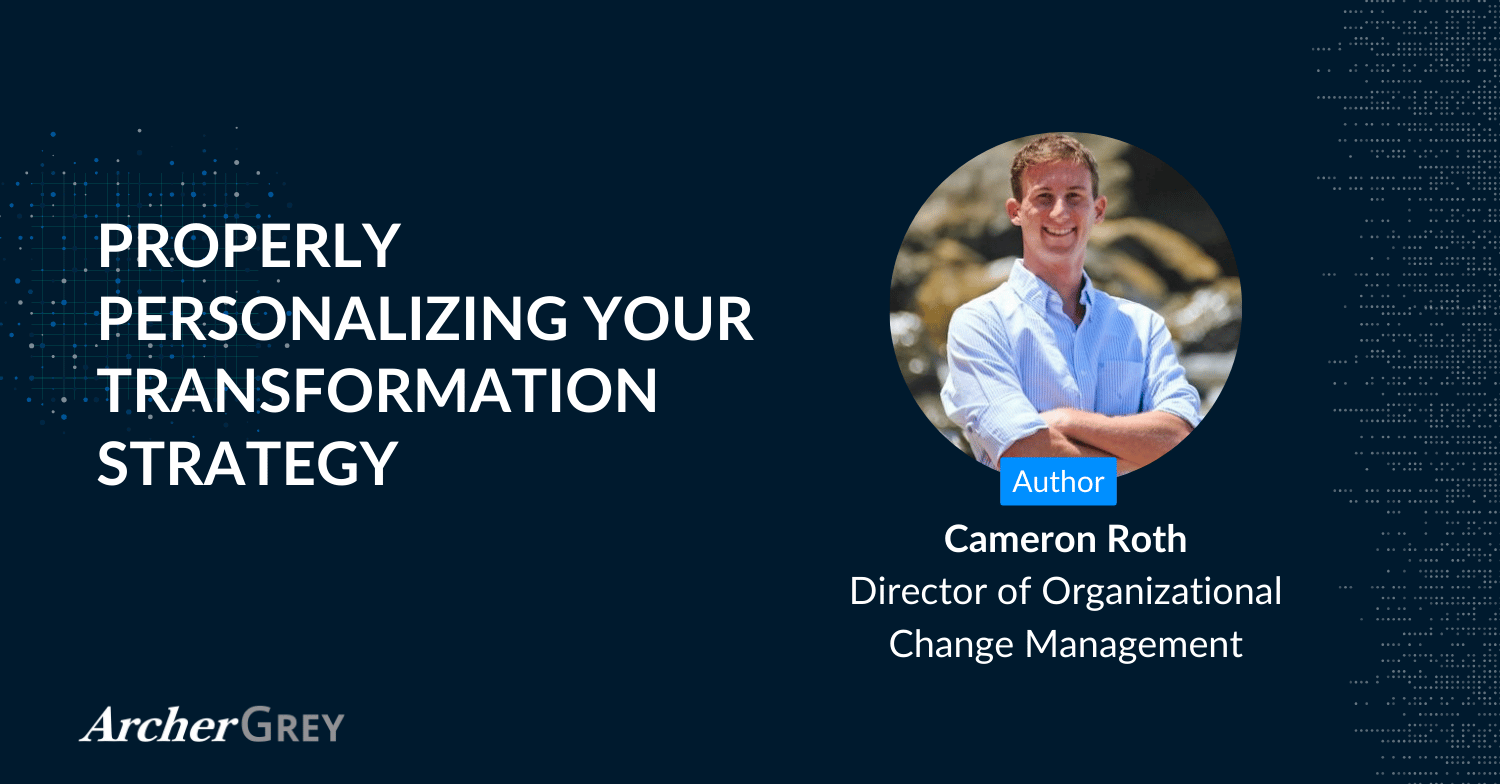The experiment
There’s a transformation planning exercise my colleagues and I enjoy during which leaders are asked, “how many of you have worked on strategy?”
Every hand goes up, usually some smiles and head-nodding too.
Next, they are asked, “if I gave your strategy to your major competitors, could they execute it as well as you?”
Always a resounding, “NO! Of course not.”
Then they are questioned about why that is the case.
“It’s our people and the special way we work together that makes our unique value achievable – it’s our culture.”
Finally, they are asked, “so if who you are as an organization has a fundamental impact on your ability to execute a strategy, how many of you have considered your organizational culture when planning change BEFORE arriving at your committed strategy?”
Usually, crickets.
Newton’s first law of motion
Culture will either be an accelerant or impediment to an organization’s strategy. Newton’s first law of motion essentially states an object’s trajectory remains unchanged unless sufficient action is used to change it. The same holds true for organizations. Their cultures determine their direction because their cultures were organically formed to support that direction – the organization’s goal. This way of working is helpful so long as the goal remains unchanged. But when leadership wants a new direction, it takes a significant amount of effort to prevent inertia because an unchanged culture will resist change indefinitely.
A PLM example
Consider Product Lifecycle Management (PLM). Forward-thinking retail and manufacturing companies know proper PLM is required to compete with lower costs, faster time to market, and higher-quality products. Accordingly, they attempt to change direction by implementing value-driving tools like industry-leading Windchill and FlexPLM. They invest significantly in the “right” implementation and ensure the business case is understood far and wide. But, in my experience, many companies experience reduced or delayed PLM ROI because of the unchanged cultural ecosystem around trust. The prevailing lack of trust between departments, between disciplines, and in data prevent proper use of transformative tools and associated processes.
Moving data from spreadsheets to cloud-based systems, changing the timeline of a process, and shifting team roles and responsibilities are natural and necessary components of the transformation to modern PLM tools. The built-up, and until now understandable, silos and mistrust between groups prevent impacted stakeholders from embracing modern PLM ways of working.
For example, providing easier, earlier, and more complete access to a design model enables a more efficient product lifecycle and may facilitate a nimbler response by the manufacturing team. However, the engineering team may be used to delaying handover of designs because they don’t trust the manufacturing team not to move too fast with it before it is finalized. This is just one of many ways lack of trust thwarts the collaborative requirements of modern PLM.
Make it personal
Leaders know change requires strategy. We’ve seen how misaligned culture blocks transformation progress and yet it is common for leaders to build a strategy without this crucial piece. What is one to do? Simple, personalize the program strategy to the organization!
But how?! I rely on these key tools:
- Organizational Readiness assessment – Organizations aren’t only unique to each other but also to themselves compared to different points in time and based on the specific needs at hand. Timely understanding of the organization’s ability to absorb change, stakeholder capacities to enact change, and progress of stakeholder enablement activities on the path to Go Live address the fluid state of readiness and how to course-correct accordingly
- Cultural ecosystem assessment – Most leaders mistakenly see culture as identity or beliefs when it is actually the manifestation of paradigms that subconsciously dictate behavior (more depth on this here and here). It is critical to uncover and explain the foundational paradigms blocking transformation so they can be removed and replaced with those that will accelerate transformation.
- Targeted Risk assessment and alignment – Every true project starts with an assessment of risk, successfully identifying visible risks; few surface hidden, entrenched risks. This method gathers a diverse group of leaders to look beneath the obvious risks to uncover those unique organizational risks that would threaten transformation progress, while simultaneously accelerating leadership ownership of the transformation.
- Stakeholder Change Impact assessment – The traditional approach is to identify “what” is changing and report out to impacted stakeholders so they can brace themselves. I take it a step further to understand the “so what”, how will those impacted feel and react to the changes. This informs the program team how to get ahead of impact and reduce resistance from those affected.
Performed at various (and sometimes multiple) points throughout transformation initiatives, these assessments yield unique and hidden insights. Addressing these insights as part of the transformation strategy is what truly personalizes the strategy to what the impacted stakeholders need at that time to deliver the expected transformational goals. In short, it enables the strongest force against the organization’s current trajectory to efficiently change it.
Not sure how to execute those activities? Let’s chat on how to approach transformations to save your organization pain and money while accelerating the time to ROI.
